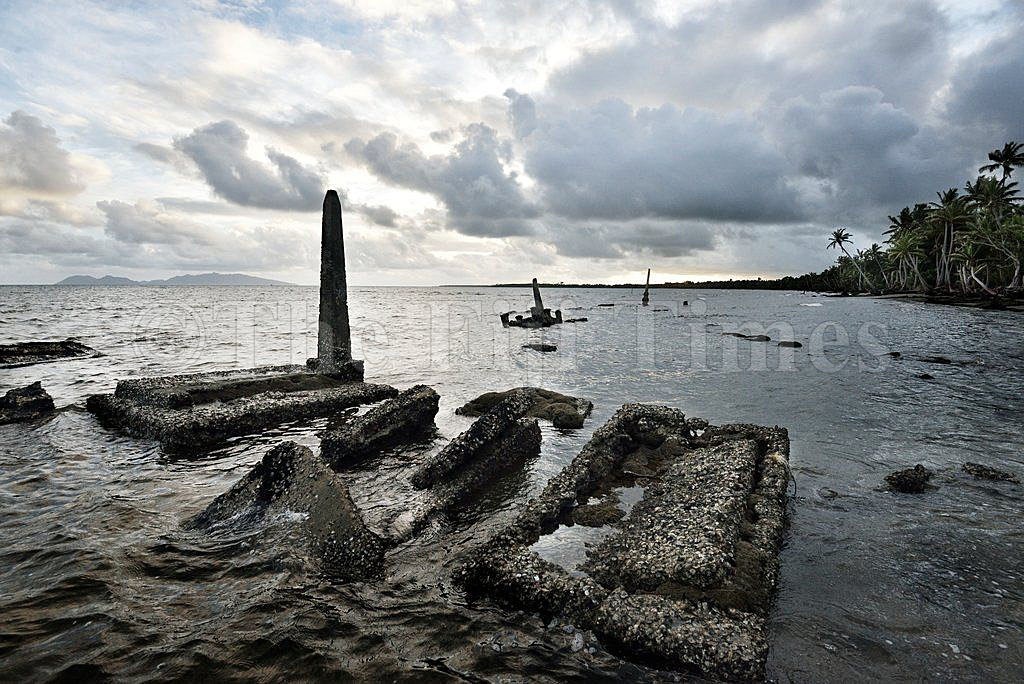The COP28 in Dubai recently adopted a breakthrough deal on loss and damage fund that would help compensate vulnerable countries coping with loss and damage caused by climate change.
This came at a time when London based International Institute for Environment and Development published a report on climate impacts on sacred places in three coastal communities in Fiji.
In the three study sites in Fiji, burial grounds at Togoru settlement (Navua), Sese and Vunisavisavi village in Vanua Levu were analysed and have been devastated by sea-level rise and coastal inundation.
Authors of the study, Merewalesi Yee and Karen E McNamara of the School of the Environment, The University of Queensland, Brisbane state these sacred places are critically important for people’s wellbeing, the maintenance of cultural practices, families and traditions, and social cohesion, as they provide a connection to ancestors and their former chiefs.
The losses to these sacred places have affected people’s spirituality, sense of place and identity.
The authors state future funding to address these losses is needed to protect these sacred places through either relocation or protection through physical structures, depending on the wishes of the local community.
Intolerable losses
Burial grounds hold immense importance in Fiji, playing a crucial role in the cultural, social and spiritual fabric of communities, state the authors.
Typically, when someone in the community has died, comfort is offered to their family and friends with the thought that the deceased person has “gone on to a better place”.
However, according to locals, this no longer provides solace to them as the burial grounds have been lost to the encroaching sea. Loss of burial grounds have triggered an array of other cascading impacts on people’s mental and emotional wellbeing, cultural traditions, practices and heritage, and social and family cohesion, the authors say.
This has particularly been the case for people in Togoru and Sese, where the desecration or disturbance of ancestral resting places can cause grief, trauma and a sense of loss.
Grave sites and other artefacts provide insights into the lineage, histories and stories of past generations. They serve as repositories of cultural heritage and contribute to the preservation of indigenous knowledge and oral traditions, so their loss is felt greatly, state the authors.
Vunisavisavi Village
Vunisavisavi Village is known to be the original residence of the first “Tui Cakau”, the paramount chief of Cakaudrove province. Lalagavesi is the Fijian term referring to the foundation stones – yavu – of the first Tui Cakau’s chiefly residence.
These foundation stones are extremely significant and sacred in Fijian culture, as they provide a connection to their first paramount chief. However, they have been devastated by coastal inundation.
Loss and damage to these important cultural sites has affected people’s wellbeing, ancestral connections, cultural practices and community bonds, state the authors.
The presence of ancestors in burial grounds and sacred spaces fosters a sense of stewardship of place, belonging, identity and continuity within Fijian cultures.
Lessons learnt
The authors state while critically important to local communities, the loss of cultural heritage, such as sacred places, is not often a major narrative in global policy discourses on loss and damage.
“Through these three study sites, we have highlighted the experiences and concerns of local communities in Fiji due to the loss of their cultural heritage through sea-level rise and coastal inundation, and the cascading effects this has on their wellbeing, sense of place and identity,”
state the authors.
Participants identified two key approaches for addressing these losses: through relocation and on-site physical protection. The authors state
policymakers should take note of these locally identified solutions and integrate them into discussions on the newly established global fund on loss and damage, to ensure that ways of addressing non-economic loss and damage are included in the fund.



